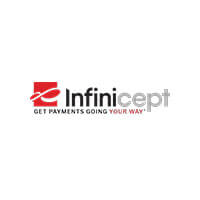 Payments decide how modern business functions. Every platform, marketplace, and software company eventually faces the same question: whether to control its own payments or hand them to someone else. Infinicept was built for that crossroads. It helps companies own their payment products and revenue streams while retaining visibility, flexibility, and pace.
Payments decide how modern business functions. Every platform, marketplace, and software company eventually faces the same question: whether to control its own payments or hand them to someone else. Infinicept was built for that crossroads. It helps companies own their payment products and revenue streams while retaining visibility, flexibility, and pace.
The company calls itself the platform that “gets payments going your way.” Behind that phrase sits a complex system that supports both established firms and newcomers. Some clients use it to launch payment processing in weeks through Infinicept Launchpay. Others expand into full payment facilitation using its PayOps infrastructure. The two options meet different needs but share the same foundation: transparency in fees and control of customer experience.
Infinicept began as a response to a problem that the industry rarely admitted. Most providers simplified onboarding by taking control away from their customers. That convenience cost businesses their autonomy. Over time, companies realised that outsourcing payments meant losing margin, losing flexibility, and surrendering growth-driving insights. Infinicept positioned itself to change that equation, letting businesses grow without giving away their most valuable assets.
The platform’s architecture combines speed with depth. A merchant can begin processing quickly but still graduate to a full payment facilitator structure when ready. Infinicept has grown by keeping things simple. New partners are added when they fit. New markets come in when the systems are ready. Nothing happens for the sake of size alone. The company now moves billions in payment volume each year, but the number isn’t what people inside talk about most. What matters to them is that the system holds when traffic surges and clients stay online. That steadiness has earned enough trust from banks and technology firms that pick reliability over speed. That design reflects years of technical refinement and advisory experience gathered from across the payments ecosystem.
“We want companies to own their payments in the future instead of renting it. When businesses take that ownership, they see new revenue, but more importantly, they see freedom to build the experience their customers actually need.” — Scott Agatep, CEO.
Executives describe the model as a bridge between independence and efficiency. Its experts work alongside internal teams to design workflows, handle compliance, and configure risk systems. For many software companies and financial institutions, that guidance defines the difference between running a payment programme and running one that lasts.
 Clients voice that sentiment, too. Some credit Infinicept for helping their company with the flexibility to design tailored solutions for customers instead of following a preset template. Others note how checkout times shortened and merchant adoption improved once the PayOps framework was in place. Across industries, the feedback aligns; control returns to the business, and with it, confidence.
Clients voice that sentiment, too. Some credit Infinicept for helping their company with the flexibility to design tailored solutions for customers instead of following a preset template. Others note how checkout times shortened and merchant adoption improved once the PayOps framework was in place. Across industries, the feedback aligns; control returns to the business, and with it, confidence.
People at Infinicept talk about progress in very practical terms. They focus on clearing the small obstacles that slow payments down. The work is patient, often invisible, but that’s the point. It’s a business built on calm execution rather than noise, and its results tend to last. Payments should advance strategy, not dictate it. That philosophy determines how Infinicept builds its products, staffs its advisory teams, and supports customers once programmes go live.
The organisation’s tone is pragmatic, almost understated. Instead of revolution, it talks about readiness, adaptability, and structure. Those priorities resonate with businesses that prefer reliable outcomes to lofty promises. Infinicept’s reputation has grown in part because it stays close to execution.
The payments sector is crowded with claims of speed and simplicity. Infinicept’s story stands out because it deals in control. It offers a route to ownership in a system built to centralise power elsewhere. For companies determined to manage payments on their own terms, it has become the quiet enabler behind a growing share of digital commerce.
